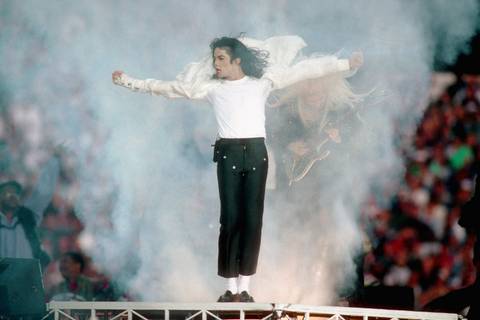At the southern end of Pest’s Danube Promenade, stunning riverfront scenery surrounds a small square, featuring views of Elizabeth Bridge, Gellért Hill, and the Royal Palace. Here atop a granite pedestal, a bold figure stands with his arm raised high, calling for his nation to unite – a historic moment captured in sculpture. This figure is the revered poet Sándor Petőfi, who inspired the Magyars to fight for freedom on March 15th, 1848 – the fateful day that sparked a revolution against oppressive Hapsburg rule – and today many sites citywide are named for him, including this panoramic square.
As a talented Magyar writer and actor in the 19th century when Hungary was mercilessly controlled by Austria’s Hapsburg Empire, Sándor Petőfi earned great popularity for his epic fairy tale János Vitéz and several other folklore-inspired poems. After settling down in Budapest, he joined a creative community of fellow artists and intellectuals that regularly gathered in the city’s Pilvax coffeehouse. Being part of this politically motivated movement propelled Petőfi and his brothers in arms to write a list of 12 Points to demand comprehensive democratic rights (such as freedom of the press and the liberation of political prisoners) for the Hungarian people; in addition, the wordsmith composed the most remarkable work of his lifetime: the “National Song”, a poem calling on the Magyars to rise up for their country’s independence.On the morning of March 15th, 1848, the revolutionaries gathered at Pilvax before marching into the streets of Budapest, loudly reciting their 12 Points and attracting a fast-growing crowd of sympathizers to join their movement. The boisterous crowd stopped before the grand stairway of the National Museum, where Petőfi stood on the steps before thousands of fired-up citizens to wholeheartedly deliver the “National Song”. As Petőfi’s fiery masterpiece further galvanized the crowd, the emperor’s representatives fearfully agreed to enact the 12 Points – and so Hungary’s 1848 Revolution began with remarkable success, with not a single shot fired on that fateful day.
Unfortunately, Petőfi’s celebrated ideas of March heralded great tragedies to come for the Magyar people within a matter of months – while the Magyars achieved several impressive battle victories, the Hapsburg forces eventually trounced the Hungarian army in 1849, when the Austrian Empire’s Russian allies added unconquerable might to the counterinsurgency; Petőfi himself was among the soldiers vanquished in the final weeks of the freedom fight.

The 1848 Revolution ended in catastrophe for the Magyars, but it transformed into the beginning of a long road to reaching the independence that is enjoyed by Hungary today – and Petőfi’s legacy remains cherished here, both in his outstanding poetry still taught to modern-day schoolchildren, and at the many monuments and public spaces dedicated to Petőfi across the nation and in Budapest.
Petőfi Square
Many Budapest visitors who stroll along Pest’s Danube Promenade traverse this petite plaza near the Elizabeth Bridge, but most passersby focus their cameras on the Danube and Buda’s captivating landmarks, often missing the centerpiece of this square named after the acclaimed author. This tiny parkland, not coincidentally located right next to March 15th Square, features a dignified statue of Petőfi, depicting the wordsmith as he zealously delivers the “National Song”, standing high on a massive grey granite pedestal. Towering behind the statue, the Budapest Marriott Hotel’s modern design stands in contrast with the poet’s classic representation, but the western panorama, encompassing the Buda Castle and Gellért Hill, enhances the timeless quality of this laudable landmark.
Petőfi Sándor Street
Stretching from District V’s Ferenciek Square all the way to Szervita Square, this downtown thoroughfare is flanked by historic Budapest buildings mounted side by side, and at one intersection we find Pilvax köz – the lane that once housed the Pilvax coffeehouse. While this historic hangout is now long gone, Petőfi Street is now home to several enduring businesses, in addition to new shops and restaurants that pop up from time to time. The southern entrance of the lane is a fresh site of the redesigned Jégbüfé – an iconic confectionery from the country’s communist era that moved to this new locale last year from Ferenciek Square – while just steps away from the sweet shop the recently opened Kajahu welcomes those who crave dishes served with innovative style. Other notable attractions here include FUGA, a cultural hotspot featuring exhibits of Budapest’s architecture, while the Katona József Theater hosts compelling classic and contemporary performances, and also houses the K:antin Café.
Petőfi Literary Museum
Located on a quiet corner just steps away from bustling Kálvin Square and the National Museum, this palatial building is hidden in plain sight near Károlyi Garden, one of Budapest’s most romantic parks. The regal edifice once belonged to the noble Károlyi family, but since 1954 it functions as a museum and gallery space featuring permanent and temporary exhibits of Hungary’s most notable writers, housing many of Petőfi’s works. While the attractions inside inherently only feature Hungarian-language materials, anyone who enters will encounter an impressive showcase of the revolutionary wordsmith’s poetry, including his original manuscripts, along with various depictions of the writer alongside traditional garb and objects from his era. The museum regularly organizes literary discussions, summer concerts, and theater performances, while the palace’s garden is open to visitors free of charge.
Petőfi Bridge

Unlike the grand appearance of Petőfi’s statue amid his panoramic namesake square just a short journey upriver, this nondescript bridge is a rather unremarkable structure from an aesthetic point of view, as its form perfectly represents the minimalist architecture of Hungary’s communist era, clearly indicating that it was constructed in the 1950s. Connecting Pest’s Boráros Square transport hub with a campus complex of several universities and the city’s popular A38 party ship on the Buda side, Petőfi Bridge does provide people who walk across it with sweeping views to the north over downtown Budapest and the soaring Buda Hills, while to the south the panorama includes the modern Rákóczi Bridge and the contemporary edifices of the National Theater and the Palace of Arts.In addition to these revered landmarks across Budapest, there are several other public settings in the city that are namesakes of Petőfi.
The mammoth expo hall called Petőfi Csarnok (pictured above) within City Park was once a popular leisure center hosting open-air concerts, eccentric exhibitions, and weekend flea markets, but now the crumbling structure might be destined for demolition in the near future. And in Buda behind the Castle District, Petőfi Sándor High School is a respected educational institution attended by many notable Magyars of modern times, including esteemed actors, high-profile politicians, acclaimed architects, and outstanding athletes.




